Your tire’s “balance” is the weight distribution in each wheel or tire of a vehicle. If the balance of your tires is off, you will start to notice a vibration or wobble at higher speeds. If the wobble is particularly pronounced, it can become dangerous and any vibration through the tires will increase the rate at which they wear. So what causes unbalanced tires and how often should you have them rebalanced?
The leading cause of unbalanced tires is simple wear and tear, but it’s not the only possible reason that your tired might become unbalanced. Driving with poor tire alignment can cause your tires to become unbalanced, as can damaged wheels or bent rims. Unless all four tires are unbalanced, you can normally identify where the imbalance is by where the vibration is coming from. If the front tires are imbalanced, then the vibration will be in the steering wheel.
If the rear tires are unbalanced, then you will feel the vibration through your seat, particularly if you sat in the back.
The vibration, or wobble, from unbalanced tires will grow over time to the point where it can make your car difficult to steer properly, potentially causing an accident. The vibration from unbalanced tires can also damage your car. Your tires will wear down faster and, if the problem is allowed to continue, it will eventually damage your shocks, bearings and even the entire wheel assembly. This damage is not only dangerous, it can be very costly to fix in the long run.
If you notice any of the symptoms of unbalanced tires you should take steps to rectify the situation immediately. Not doing so could put you and your passengers at risk. The best way to avoid this risk is to prevent the situation from happening in the first place. A good rule of thumb is that your tires should be rebalanced every 12,000 miles driven or every other time your tires are rotated. Having your tires rebalanced as part of tire rotation is a quick and easy process that could save you from costly repairs in the future.
Having your tires rebalanced as part of tire rotation is a quick and easy process that could save you from costly repairs in the future.
Northwest Driving School and Traffic School provides the Las Vegas community with live driving and traffic classes taught by seasoned instructors. All of our driving instructors have passed background checks, each automobile is DMV safety-approved and every member of the Northwest family is committed to providing excellent drivers ed and behind the wheel instruction.
At Northwest, you can expect to find outstanding classes, both on campus and behind the wheel, that are engaging, fact-filled, entertaining and geared toward success. We make no bones about it, we believe that Northwest provides the best driving lessons in Las Vegas, no matter your age or background. We are proud of the fact that 98% of our students pass their test on the first try. Call us at (702) 403-1592 to start your driving adventure with one of our expert instructors.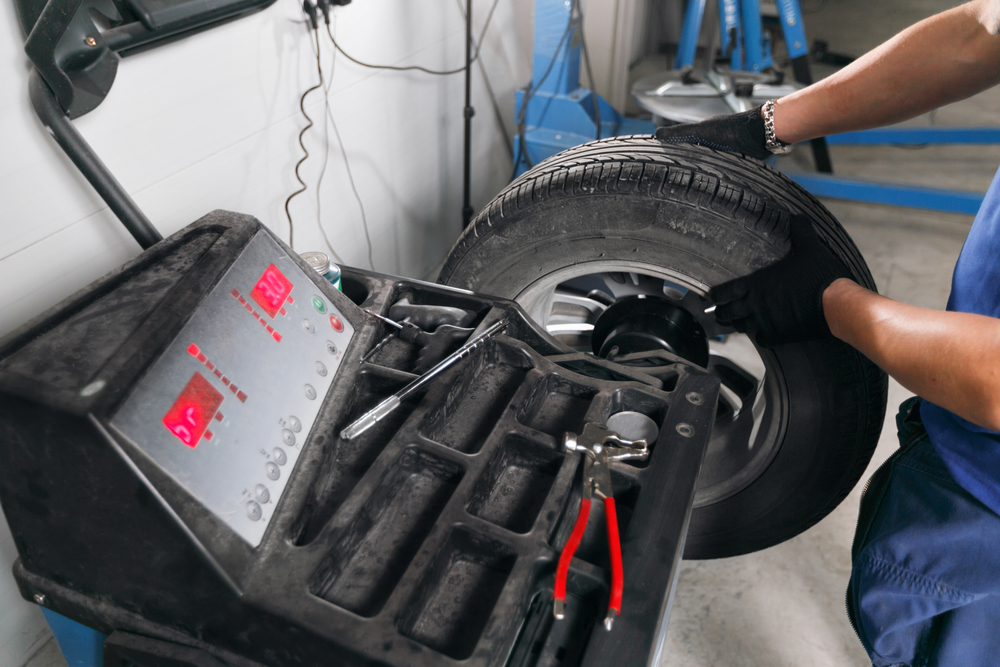
Written by:
Rich Heinrich
Master Instructor, Emeritus
Tire balancing is a tune-up for your wheel-tire set. It makes sure that weight is evenly distributed around the entire circumference of the unit. The common symptoms of out-of-balance tires are uneven and faster tread wear, poor fuel economy, and vibration in the steering wheel, the floorboard or the seat that gets worse at faster speeds.
When all areas of the wheel-tire unit are as equal in weight as possible, the tire will roll smoothly. This helps it wear evenly, for longest life. Balancing also contributes to ride comfort: Imbalanced tires will wobble or hop up and down, which causes vibration. If a front tire isn’t properly balanced you’ll likely feel vibration in the steering wheel. If the problem is in the rear the tremor will be noticeable in the seat or floor.
Imbalanced tires are easily corrected, but the work is precise. It’s done by attaching small weights, just fractions of ounces, to the wheel.
It’s done by attaching small weights, just fractions of ounces, to the wheel.
Everyday wear on tires will contribute to imbalance. Normal manufacturing imperfections are also a cause: Tires and wheels don’t have precisely equal weight distribution. They’ll be slightly heavier in some spots.
Just half an ounce in weight difference is enough to cause a vibration when you’re driving.
Rebalancing is done in a tire shop by putting the wheel-tire unit on a tire balancing machine that takes measurements to pinpoint lighter or heavier areas and making adjustments to account for these weight differences. The best time to get it done is when tires are being rotated, both for convenience and because you might have a tire out of balance on the rear of the vehicle and won’t feel it until it is moved to the front.
Here’s how it’s done:
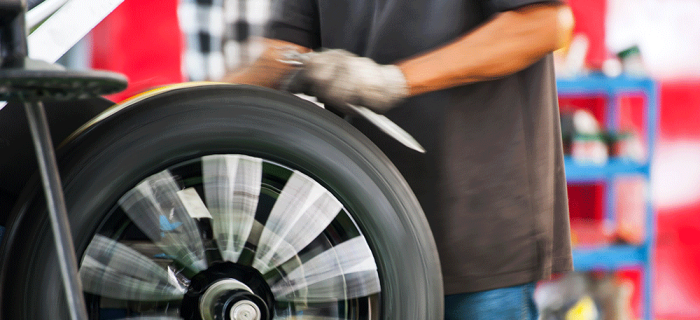
Though both should be part of regular auto maintenance, balancing isn’t the same as getting an alignment. Wheel alignment corrects the angles of the tires so they travel in the same direction and make contact with the road properly. Alignment reduces uneven tire wear and extends the life of your tires. Oftentimes tire balancing and alignment are perceived to be the same thing, but are not.
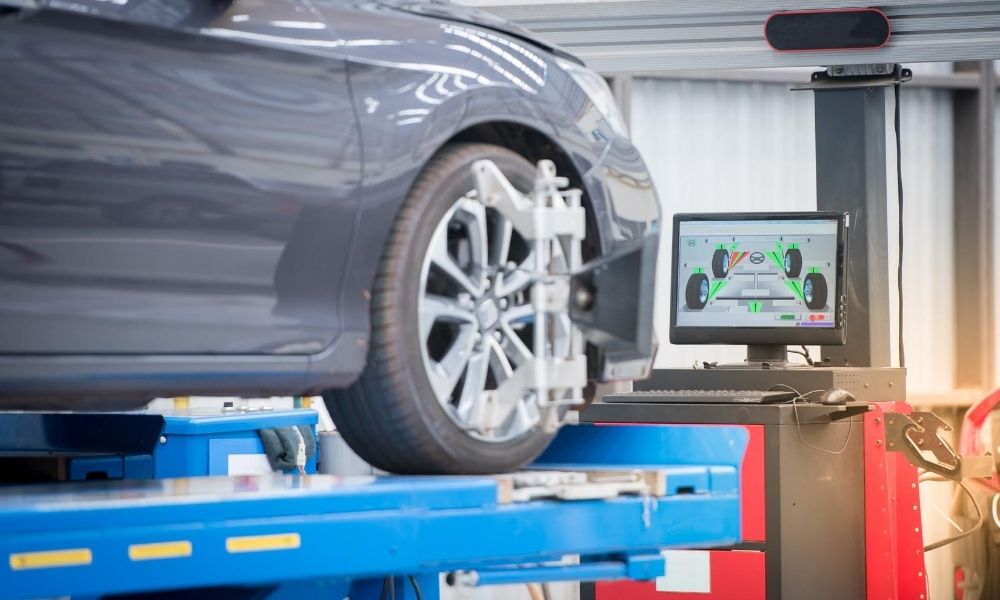
Tire balancing and rotation are often done at the same time, but they aren’t the same service. Tire rotation is when a vehicle’s front and rear wheels are switched to even out tread wear between them. Since both require removing each wheel, it’s convenient to do them at the same time.
Vibration when underway could be caused by an imbalanced tire and wheel assembly or something else — a bent wheel, a damaged tire (which won’t be fixed by balancing), worn suspension parts or other aging components. If you feel a vibration, don’t wait to get it diagnosed. You’ll head off other problems — and enjoy a smoother ride — when your tires are well balanced.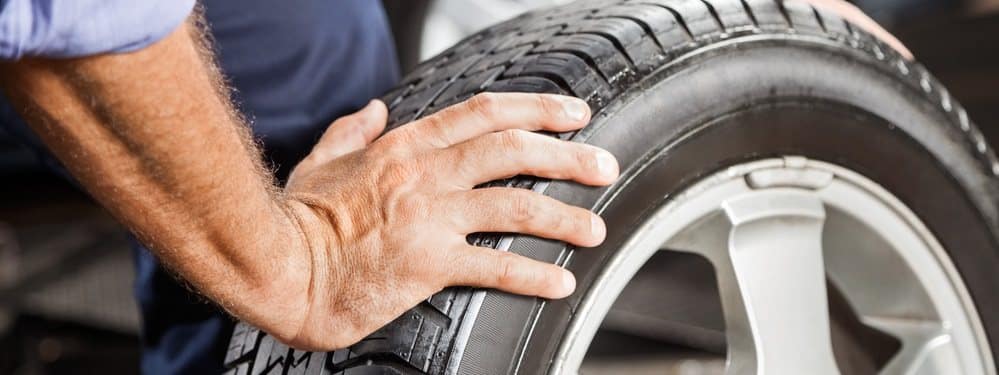
Schedule an Appointment
Lack of wheel balance is not only a deferred suspension expense and premature tire wear, but also a potential threat to safe driving. Wheel wobble leads to uneven "eating" of the tire, vibrations on the steering wheel, which are more felt with increasing speed.
However, once done balancing is not something eternal. Poor road surface, long-term storage, errors in operation lead to wheel imbalance. Winter and summer tires on two sets of discs do not save here.
Regardless of the operating options, the answer here is unambiguous: yes, balancing is needed.
Consider the option with two sets of rubber on the disks.
After leaving the winter, the driver sends the winter set for storage in the garage or on the balcony. The wheels will only return to the car closer to the next first snow. During the operation, the wheel with a high degree of probability flew into the pit more than once, it is possible that the tire was not inflated in time, it was operated in modes not intended for it. All this can lead to loss of weights, a slight change in tire weight, but enough to upset the balance of the wheel.
All this can lead to loss of weights, a slight change in tire weight, but enough to upset the balance of the wheel.
Tire manufacturers recommend balancing every 10-15 thousand km. Each driver has his own driving mode, so these recommendations are quite difficult to follow. It is better to check and balance before the start of the season.
At the expense of winter studded tires, there is a special opinion that the mileage until the next check is 5 thousand km. The reason is the flying spikes and increased loads on the wheel, which are formed due to adhering ice.
It is also recommended to balance after a puncture or cut has been repaired, after a serious blow.
The quality of work is influenced, first of all, by the equipment. Both the level of the stand and its wear are important here.
The best results are given by computer-controlled stands.
Such equipment makes it possible to balance discs using a system of spaced weights, even for wheels with a large imbalance.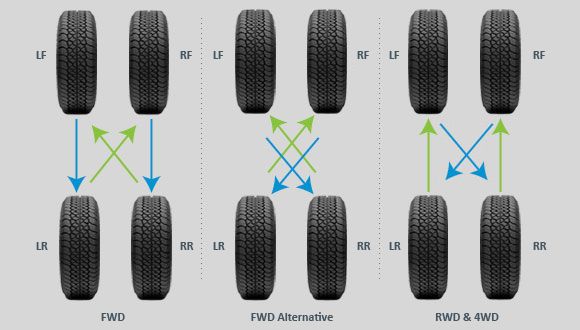
Stands can be calibrated to different accuracy: 1, 5, 10 grams. Most often, 5-gram precision is used. This is quite enough to achieve good results for a wide range of car tires.
10 grams do not give such accuracy, but for lack of a better one, it is quite sufficient. Calibration of the machine by 1 gram is necessary for vehicles operated at high speeds.
However, no matter how modern the equipment is, over time, wear and tear of the elements occurs. Most often, wheel mounts are produced, which introduces errors into balancing. Stand bearings become unusable less often. If the bearing is damaged, there are beats in it. This situation leads to inadequate sensor readings and imbalance.
6000 rub
8500 rub
9000 rub
Most car owners, having once balanced the wheels in a tire shop, mentally “check the box” in front of the corresponding list of operations necessary for the car and forget about this topic.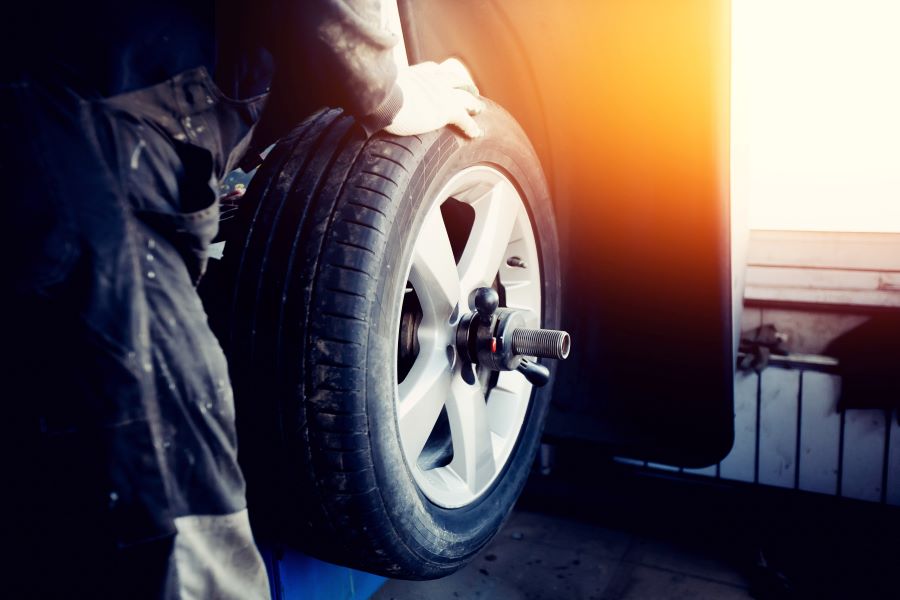 But in vain.
But in vain.
Maxim Stroker
Let's say right away that car owners, who change tires seasonally on the same discs every autumn and spring, in most cases do not have to think about preventive wheel balancing. With their rubber, this operation is carried out at each visit to the tire shop. Another thing is if a person, for example, drives the same “all-weather” all year round. Or the car owner has two seasonal sets of wheels mounted on disks.
Recall that balancing is the operation of moving the center of mass of the wheel to its geometric center on the axis of rotation. To do this, the service employee attaches weights of the required weight to the disk of the assembled wheel in the places determined using the balancing stand. Over time, these metal patches can fall off. Tires wear unevenly. Each puncture in rubber means an extra patch on its inner surface or a tourniquet inserted into the tread. The disk itself can bend when it hits the hole.
All these factors significantly shift the center of gravity of the wheel.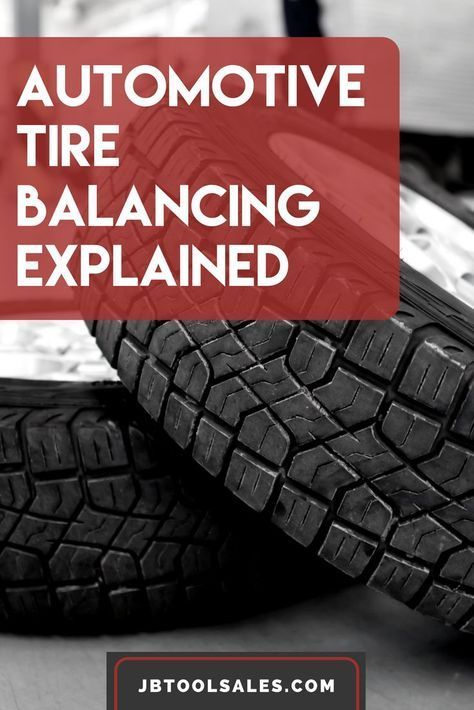 Its shift leads to the appearance of beats and vibrations on the go. The suspension, the steering system suffer from this, the wheel itself begins to wear unevenly even at speeds when the driver does not feel much discomfort on the steering wheel. The approximate frequency with which it is recommended to resort to preventive wheel balancing is calculated in kilometers.
Its shift leads to the appearance of beats and vibrations on the go. The suspension, the steering system suffer from this, the wheel itself begins to wear unevenly even at speeds when the driver does not feel much discomfort on the steering wheel. The approximate frequency with which it is recommended to resort to preventive wheel balancing is calculated in kilometers.
Approximately every 10,000-15,000 km. it is worth visiting a tire shop and checking the balance, since obvious beating, as the main sign of imbalance, can only be felt for the front wheels. In this case, at a certain speed, the steering wheel starts to shake frantically. The rear axle is not connected to the steering wheel, and therefore it is much more difficult to notice that something is wrong with it.
Thus, if the car rolls more than 15,000 km per season on one set of tires, it is highly recommended to call the tire shop after reaching this mileage. For fans of all-weather tires, this recommendation applies in the same way, only without reference to the time of year.